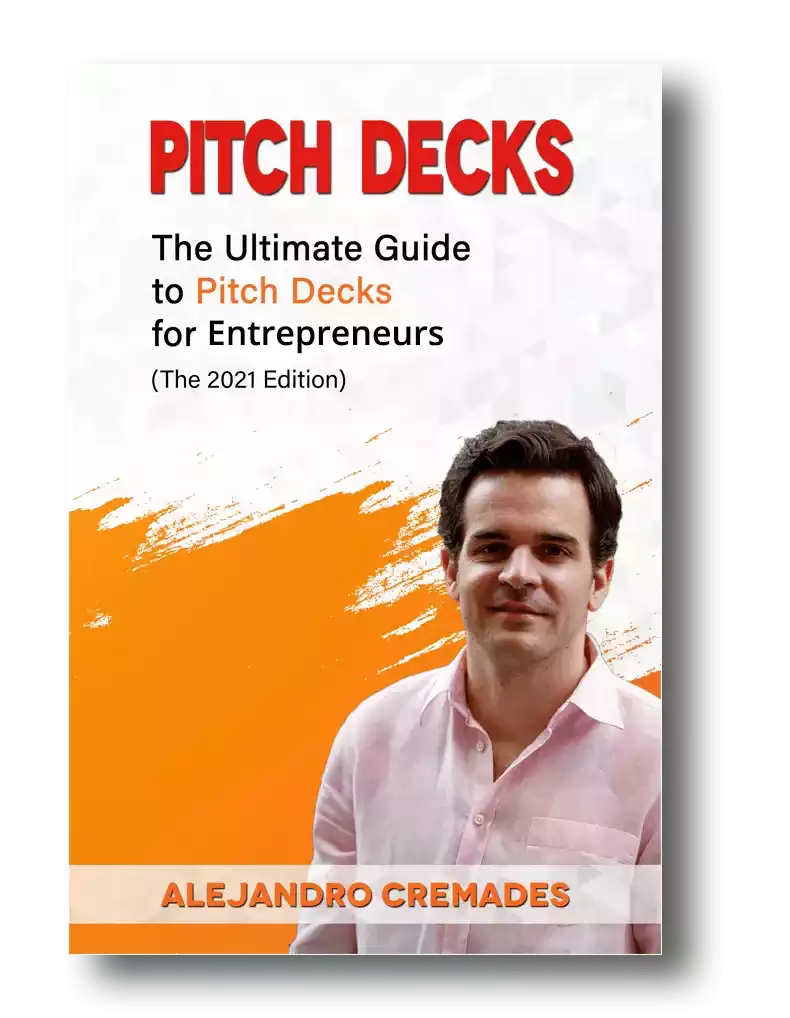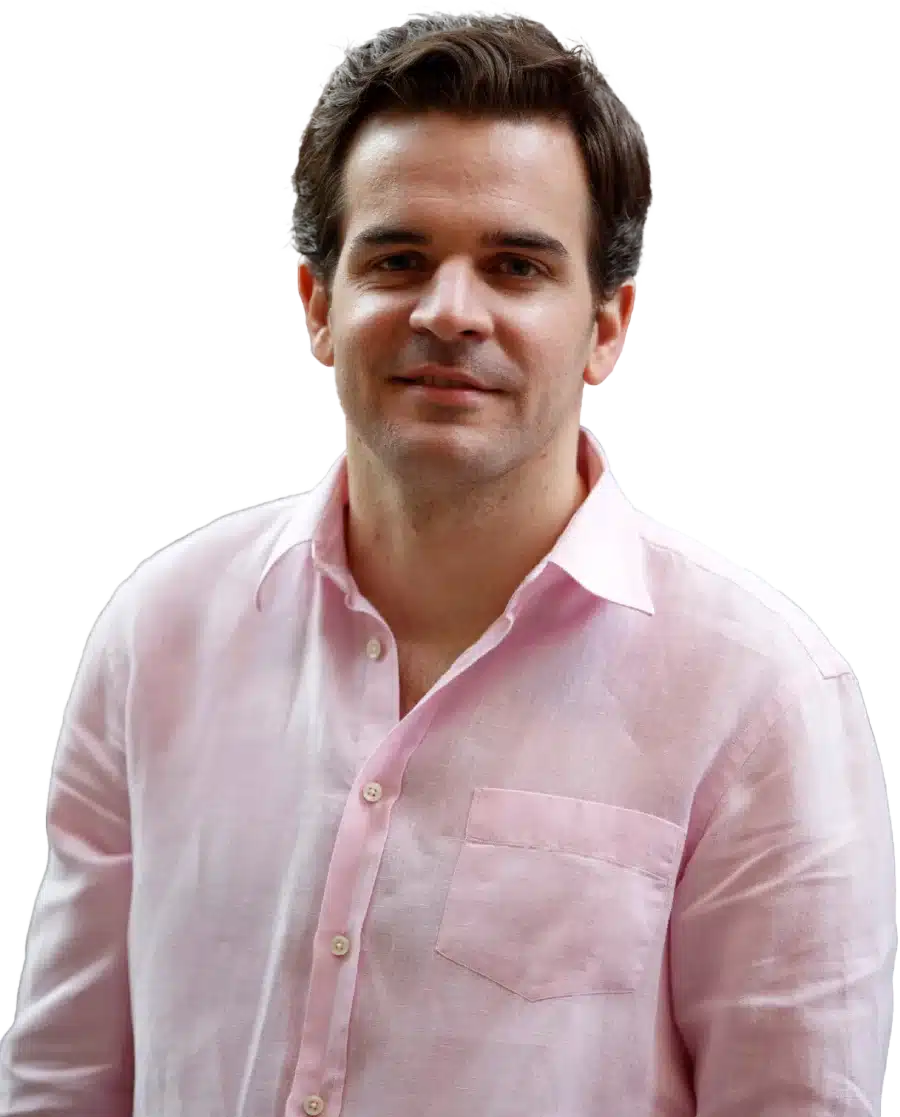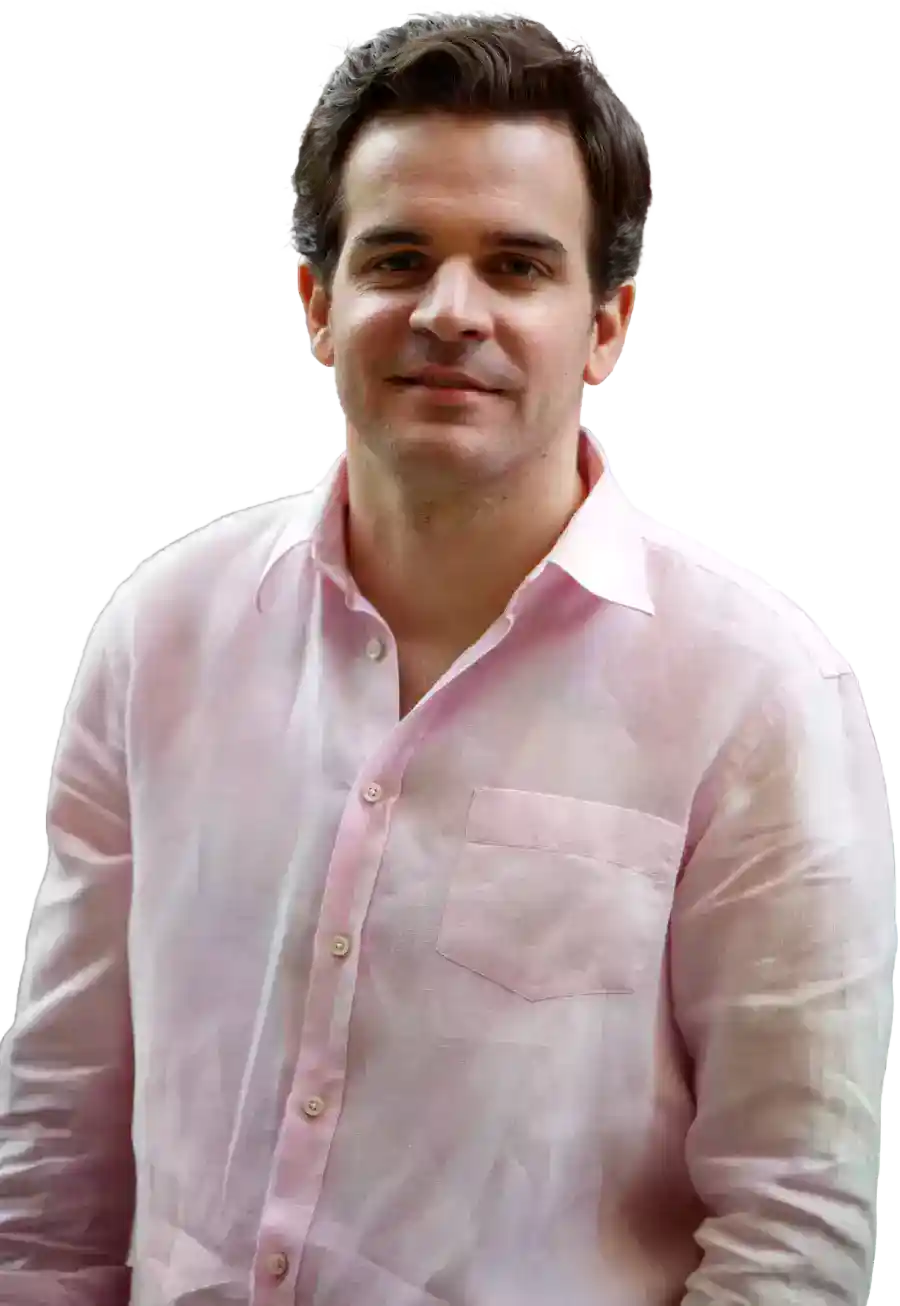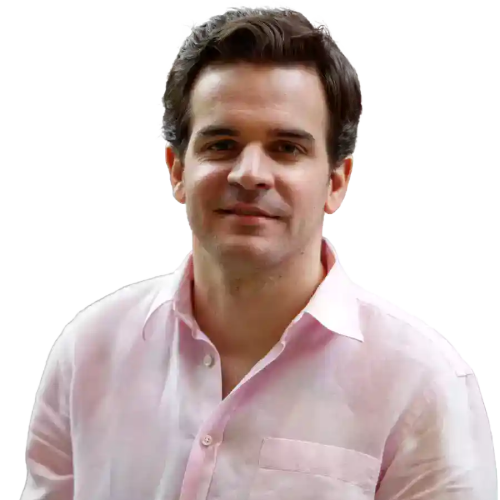When you hear about startup journeys, you often expect Silicon Valley dorm rooms, tech hacks, or venture capital from day one. Mark Rampolla’s path couldn’t have been more different. He journeyed from a Pittsburgh childhood to the Peace Corps in Costa Rica.
Eventually, Mark founded and sold ZICO Coconut Water to Coca-Cola and then repurchased it. ZICO raised funding from International Paper and several Latin American families that believed in Mark.
In this episode, you will learn:
- Mark’s Peace Corps experience shaped his entrepreneurial vision through service and perspective.
- Living in Costa Rica taught Mark that happiness isn’t tied to money and inspired ZICO’s idea.
- Mark left corporate comfort at International Paper to pursue meaningful entrepreneurship.
- ZICO’s breakthrough came from focusing narrowly on yoga studios as a launch market.
- Coca-Cola acquired ZICO for $200M, but Mark later repurchased it for just 2% of that amount.
- Post-exit struggles revealed the need for inner work, therapy, and emotional growth.
- True entrepreneurial freedom lies in combining business success with inner fulfillment.
SUBSCRIBE ON:
Keep in mind that storytelling is everything in fundraising. In this regard, for a winning pitch deck to help you, take a look at the template created by Peter Thiel, the Silicon Valley legend (see it here), which I recently covered. Thiel was the first angel investor in Facebook with a $500K check that turned into more than $1 billion in cash.

*FREE DOWNLOAD*
The Ultimate Guide To Pitch Decks
Remember to unlock for free the pitch deck template that founders worldwide are using to raise millions below.
About Mark Rampolla:
Mark Rampolla is a visionary entrepreneur, investor, writer, speaker, and coach, known for inspiring mission-driven leaders to build businesses that matter. As cofounder and co-managing partner of GroundForce Capital, he guides bold founders in scaling companies with purpose and impact.
Previously, Mark founded ZICO Coconut Water, pioneering the multibillion-dollar coconut water category and selling the brand to The Coca-Cola Company—before famously buying it back.
Throughout his career, Mark has invested in over one hundred companies, served on more than twenty boards, raised capital exceeding $1 billion, and created enterprise value exceeding $5 billion, resulting in the creation of tens of thousands of jobs. His influence has shaped industries, accelerated movements, and empowered a generation of conscious entrepreneurs.
A former Peace Corps volunteer, corporate executive, and author of High-Hanging Fruit, Mark is deeply passionate about helping entrepreneurs break free—from mental, emotional, financial, and societal constraints—to live and lead with true freedom.
Since losing his home in the 2025 Pacific Palisades fires, Mark has been wandering. But not every wanderer is lost.

Raise Capital Smarter, Not Harder
- AI Investor Matching: Get instantly connected with the right investors
- Pitch & Financial Model Tools: Sharpen your story with battle-tested frameworks
- Proven Results: Founders are closing 3× faster using StartupFundraising.com
Connect with Mark Rampolla:
Read the Full Transcription of the Interview:
Alejandro Cremades: Alrighty, hello everyone, and welcome to the DealMaker Show. Today we have a founder who is quite an amazing founder. I’m actually a big fan, and I was also a customer of theirs. I bought their drink every day, all day. I remember especially after a night out, it really came in handy.
Today, I think his story is super inspiring. We’re all going to learn a lot. I’m really excited about this—building, scaling, financing, exiting, and even rebuying the previous company. Brace yourself for quite the episode.
But without further ado, let’s welcome our guest today, Mark Rampolla. Welcome to the show.
Mark Rampolla: Thank you, Alejandro. I’m happy to be here. I’m a fan of yours and of the show as well, so it’s great to be here. I’m honored.
Alejandro Cremades: So, originally born and raised in Pittsburgh, Pennsylvania—give us a walk through memory lane. How was life growing up for you?
Mark Rampolla: Oh boy, life was simple and easy in Pittsburgh in that era. I was a big sports fan. Everybody was fanatical. My family didn’t have any money—we weren’t poor, but nobody in the neighborhood had money.
It was just a great place to grow up. I could be outside all day, playing for hours at a time. I loved growing up that way. I was the youngest of six kids, and it was a good time and place.
Alejandro Cremades: So how did this whole idea of entrepreneurship develop for you? Do you think it came over time, or were there people in your family? Were you born with it? Where did it come from?
Mark Rampolla: Maybe I was born with it, but I wasn’t raised with it. Not only entrepreneurship but business in general—no one in my family was in business at all. Even in my neighborhood, the only true businessperson I can remember was a family friend who worked as the Maxwell House Coffee salesperson for Southwestern Pennsylvania.
That was it. I do remember he had just a little bit nicer house, a little bit nicer car, and he was kind of a salesy type of guy. That planted a little seed. But it really wasn’t until I went to college and met friends from business families that I began to take an interest.
Even then, entrepreneurship seemed weird to me. This was the 90s. I felt like to change the world, have an impact, or make money, the place to be was corporations. That’s what I went after.
Alejandro Cremades: Well, corporate tech sounds like it was your thing in the 90s. How was that journey for you, and what was your big takeaway?
Mark Rampolla: It’s been a circuitous journey in many ways. I wound up getting an internship with IBM during college—suit and tie days—basically teaching Lotus 1-2-3, the precursor to Excel, to their customers.
I was also helping little tech companies from this weird place called Silicon Valley integrate and sell their software to IBM customers in Wisconsin. But it didn’t click for me that there was this whole tech revolution happening.
I wasn’t a suit-and-tie guy, so I quit that to join the Peace Corps and became a volunteer in Central America.
Alejandro Cremades: That’s amazing. How did you get that calling—switching from corporate to finding yourself in Latin America? That’s quite the shift.
Mark Rampolla: Great question. Looking back, I think it was more characteristic of my family. My parents were activists, very Catholic, but in the sense of “Jesus was a radical—we go out and serve the poor.”
I also went to a Jesuit college, so social service resonated with me. But I also had an adventurous spirit. At a career fair, I was interviewing for corporate jobs, but my grades and test scores weren’t great. Looking back, I realize I had ADHD pretty seriously.
Then I saw this little booth for the Peace Corps. It resonated with me as much for the adventure as for anything else. I’d never been out of the country, didn’t speak any languages, and it just sounded fun and adventurous.
Alejandro Cremades: Obviously, seeing more of the world outside the U.S. must have given you perspective. Especially in Latin America, it’s not as comfortable as the U.S. What did that open up for you?
Mark Rampolla: It changed my life, Alejandro. It opened up the world to me. A couple of things stood out. One, I had all these projections of what poor people might live like. What I found was they were happy, with the same dreams and hopes as anybody else.
I made $187 a month, which was enough to live comfortably in Costa Rica at that time. I rented a little house—my daughter later called it a shack—but I was fine. So I didn’t build any association of money and happiness.
I also saw early indications of sustainability work, and I met a lot of entrepreneurs and family businesses. That laid a foundation for me. And one thing stuck with me: hiking into remote villages, I would see Coca-Cola. I remember thinking, what would it be like to leverage the power of business, the power of that infrastructure, to do more than just deliver sugar and water?
That seed stuck with me. And of course, I tasted coconut water there for the first time. It became part of my life—at the beach, as a hangover cure, even as a mixer.
Alejandro Cremades: At what point did you still have the idea of coconut water from your time in Latin America, and what was the moment that pushed you to really bring it to life with Zico?
Mark Rampolla: Great question. Fast forward, I was living in Latin America with my then-wife, Maura. We had two little girls, and we were living in El Salvador. I started thinking about my career progression and had a bit of a crisis of confidence.
International Paper was based in Memphis, Tennessee. We had lived there for a couple of years and loved it, but we didn’t want to stay long term. When I looked at my boss’s job and my boss’s boss’s job, I didn’t love them. And as much as the company treated me well and I learned a ton, it was paper and packaging—it just wasn’t stimulating anymore.
So, what became Zico actually started with fear. The fear was: I don’t see myself on this trajectory. If I leave, the job I’m trained to do is be a general manager or maybe a division president in Latin America. That would mean living in Miami and traveling 150 days a year. I didn’t want that either.
That was the beginning of me wanting to break free and craft my own life. Then the idea came afterwards.
Alejandro Cremades: So then what happened next?
Mark Rampolla: I started brainstorming ideas. Nights and weekends, I’d just go through possibilities. Everything from rolling up the dairy industry in Central America to exporting products like chocolate and clothing. I even looked at trucking after NAFTA and CAFTA were signed.
But then I developed criteria with the help of friends, family, and my wife. The usual business ones—big industry, good margins, potential to disrupt. But also personal ones—does this fit my lifestyle? Will I be energized to do this? How will my girls think of it 20 years from now?
Those criteria eliminated trucking and dairy. It steered me toward food and beverage, where I was passionate. Coconut water had been latent in me for a decade. It was always there.
Alejandro Cremades: How were those early days? Give us an inside look at getting things going, those first sales.
Mark Rampolla: Well, as the master fundraiser, you’ll appreciate this: I had never raised money in my life. I had no family or friends with money—or at least that’s the story I told myself.
But I had built relationships with Latin American business families through International Paper joint ventures. They eventually told me, “Mark, we know you’re going to leave International Paper someday. We want to back you.”
A year later, I took them up on it. They invested a million dollars. Now, it was more Latin American–style investing—they put up the capital, they own the company. I gave away a lot of equity, but at the time, a million dollars seemed like a fortune.
So, I quit my job, moved to New York with my wife and kids, and within six months, we were technically bankrupt. The next five years became a grind of raising money little by little.
Alejandro Cremades: What was the inflection point where you thought, “We’re onto something here”?
Mark Rampolla: There were a few. People would say, “Just get into Whole Foods,” or “Just get on Oprah,” or “Just get a celebrity.” We did all of that, and the business grew, but it took time.
Our strategy was “inch wide, mile deep.” Own New York City. I used to joke with my team that New Jersey was international. Our anchor was Bikram Hot Yoga Studios—every studio in the city carried Zico. That fueled neighborhood growth.
The big moment was in 2008 when Coca-Cola approached us. They had just paid $4.1 billion for Vitaminwater and didn’t want to miss out again. They launched Ventures & Emerging Brands to connect with startups earlier.
A Coke executive told me they did a nationwide study on trends—not just beverages, but fashion, music, and culture. Zico showed up on the map—not coconut water, Zico. That validated our entire marketing strategy. That’s when I knew we were onto something.
Alejandro Cremades: That’s amazing. And around that time you also worked with Jesse Itzler. What was that like?
Mark Rampolla: I love Jesse. Nobody thinks like him. At first, Coke worried: “Can you create the buzz and excitement we need to scale this?” They suggested someone. I said, “Let me guess—Jesse Itzler.”
We met and hit it off. He invested, brought in celebrities and athletes, and had a boutique marketing team we engaged with. He was an active investor and board member. His genius is cultural buzz—unlocking celebrity and athlete networks, which was not my world. That was a huge asset.
Honestly, had we never sold, I think we could have leveraged Jesse’s capabilities even more. But by then, we were already doubling every year. Four years later, Coke made their move.
Alejandro Cremades: So let’s talk about that. How did the deal with Coca-Cola come together?
Mark Rampolla: This is one of my favorite stories. At the time, we had one major competitor, Vita Coco. Both of us were in discussions with Coke. Coke chose us, and we thought it was game over—Zico would dominate.
Well, we all got that wrong. Coke is an amazing company, no disparagement, but big companies are great at one thing and bad at everything else. Small brands like Zico didn’t fit neatly. Was it a water? A juice? Which division? Which distribution network?
They went through multiple GMs after I left, and the brand lost focus.
Mark Rampolla: You can’t make those sorts of changes with a small brand. So even in the early stages before we sold, there were a lot of challenges. I remember we worked for almost two years just to gear up to distribute in two markets, LA and Miami.
The business was doing great with no Coke distribution at all. We were growing by 100% per year. But it took two years of planning to launch just those two markets.
And when we did, the results were… not great. The Coke team kept saying, “You’ve got a brand problem. The brand’s not resonating.”
I wasn’t buying it. So, on our dime, we hired some virtual, tech-enabled shoppers to go in and scan the stores.
The out-of-stock rate was through the roof. Here’s what would happen: Zico consumers didn’t buy consistently. Nobody buys, nobody buys, nobody buys… then Alejandro walks by and buys six. Then again, nobody buys, nobody buys, nobody buys.
The data might show seven per week, one per day. They thought they could stock one per day and be fine. But the reality was they needed 30 on the shelf, because there were five Alejandros that might walk by. The algorithm couldn’t handle the disparity of high velocity with a small consumer base.
Once we showed them that, Steve Cahillane—who was running that division at the time and later became chairman and CEO of Kellogg—finally got it. I told him, “Steve, you’re killing me.” He looked at the data and said, “We get it.”
That gave me the ability to go back to our board, which now included several Coke executives, and say, “We’ve spent a ton of money gearing up for this, and we’re not getting the results. We need more money. But given the structure of the deal, any new money is dilutive to me, not to you.”
So, I had what I call a come-to-Jesus board meeting. I laid out three scenarios:
A, I need $20 million of non-dilutive capital invested in the company within 45 days. You write the check, you invest, no dilution, you don’t get more ownership, and you retain your option to buy.
Two, we negotiate for you to buy the company now and figure out the price.
Three, I’ll buy you out.
Whichever one you want, I’m game. Now, how I would have raised $75 to $100 million, I don’t know. But I knew—or at least claimed—I could get it.
We went through a long, tough negotiating process, and they eventually decided to buy it.
Alejandro Cremades: And what was the price?
Mark Rampolla: A little over $200 million. It was definitely under where I think we could have been, absolutely under where we would have been.
Alejandro Cremades: Pretty nice.
Mark Rampolla: We waited another five-plus years, but for me and my investors, it felt like, “Okay, we made it. We achieved it. We hit the mountain. We’re successful. I’m done. I’m free.”
Alejandro Cremades: And now, one thing that’s even crazier is that you literally bought back the brand for not even 2% of what they paid. And now it sounds like next year you’ll be hitting the same numbers as at the time of the transaction.
Now you’ve shifted gears. You’re on the investment side, part of GroundForce Capital, with over $300 million in assets under management. I’m sure the operational expertise you bring to founders makes all the difference.
But there’s one thing I want to touch on. With the Zico transaction, you achieved financial freedom. People often think, “If I achieve this, then I’ll be happy. If I achieve that, then life will be beautiful.”
But you went through a personal transformation—inner work that gave you a whole different perspective, which you’re now capturing in a book. Why don’t you tell us about that?
Mark Rampolla: Sure. I appreciate you asking that, Alejandro. At some point after selling, I was the poster child of success—quit my job, built the business, sold it, made a pile of money, and won. But as the years went on, that winning didn’t look so much like winning.
I became a really active angel investor. I told the story of doing 40 investments, starting a fund, and it all sounded positive. But behind the scenes, I was unconscious about how I was investing. I was acting out of fear, desire, ambition, and comparison.
The same traits that made me a good entrepreneur clouded my vision as an investor. I had big blind spots. Many entrepreneurs face this—the qualities that make us great founders can make it hard to be great investors. I wasn’t aware of those blind spots, and they cost me millions personally.
Some might say that’s normal, but I see now how much it was driven by unconscious desires and fears.
Similarly, I’d been happily married for over 20 years, but post-Zico, our marriage wasn’t what we wanted. We tried therapy and working on it, but we had buried and denied so much fear and pain for 10 years that it was almost impossible to fix quickly.
Looking back, if we’d learned to communicate and process emotions better, things might have been different. In the early Zico days, I realized if I really felt what was inside—fear, self-doubt, insecurity—I might not make it. So I consciously buried it. It was almost like I meditated myself into cutting off my emotions. It worked—until it didn’t. Ten years later, everything came back.
What you don’t process comes back. I carried that into my investment career. Now with GroundForce, we actually have $600 million under management and a great team. I realized I had to do my own inner work.
So I spent six years in therapy, analysis, coaching. I studied neuroscience, history, spirituality, did retreats, and slowly broke free of limiting beliefs, self-doubt, and learned to process emotions.
I began to feel freer than ever. Even through tough times—like losing my house in the Palisades this past January—I handled things differently. Instead of just powering through, I let myself feel sadness, anger, and process it.
Now I’m divorced, living in a modest rented house, and I feel freer than I ever have. That’s why I wrote An Entrepreneur’s Guide to Freedom. I realized I spend most of my time with entrepreneurs on personal struggles—their insecurities, their doubts, what shows up in board meetings and with teams. The inner work leads to outer success.
What I want now is to help people achieve personal freedom so they can bring their greatest gifts to the world.
Alejandro Cremades: I love it. Mark, I’m sure a lot of people listening are inspired by your story. What’s the best way for them to connect with you, whether on the investment side or around your book?
Mark Rampolla: Thank you for asking. LinkedIn is good for me—I’m not super active, but I check it. I also have a personal website, markrampol.la, that’s focused around the book. GroundForce Capital is the investment firm.
The book goes on sale on Amazon October 7, and it’s available for pre-order now. I’m loving the response. I get so many amazing stories. The most common one is, people tell me, “Thank you for sharing that. Me too.” We all want to be seen and heard.
We all have these struggles, Alejandro. I’m committed to opening up space to talk about them and ultimately to deliver even better results.
Alejandro Cremades: I love it. Mark, thank you so much for your contributions to the venture ecosystem and for being on the show today. It has been an absolute honor to have you with us.
Mark Rampolla: Thank you, Alejandro. The honor has been mine. I really appreciate it and enjoyed it.
*****
If you like the show, make sure that you hit that subscribe button. If you can leave a review as well, that would be fantastic. And if you got any value either from this episode or from the show itself, share it with a friend. Perhaps they will also appreciate it. Also, remember, if you need any help, whether it is with your fundraising efforts or with selling your business, you can reach me at al*******@**************rs.com
Podcast: Play in new window | Download
Subscribe: Apple Podcasts | Spotify | TuneIn | RSS | More





Facebook Comments